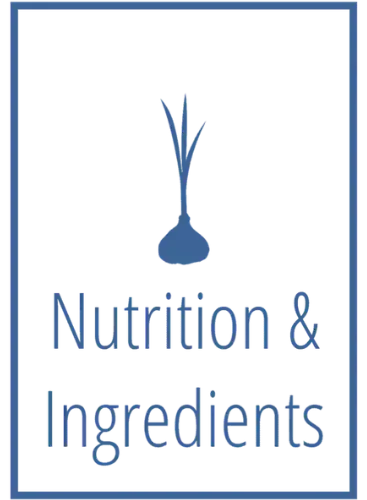Strawberry Milk vs Chocolate Milk: Which is Better?
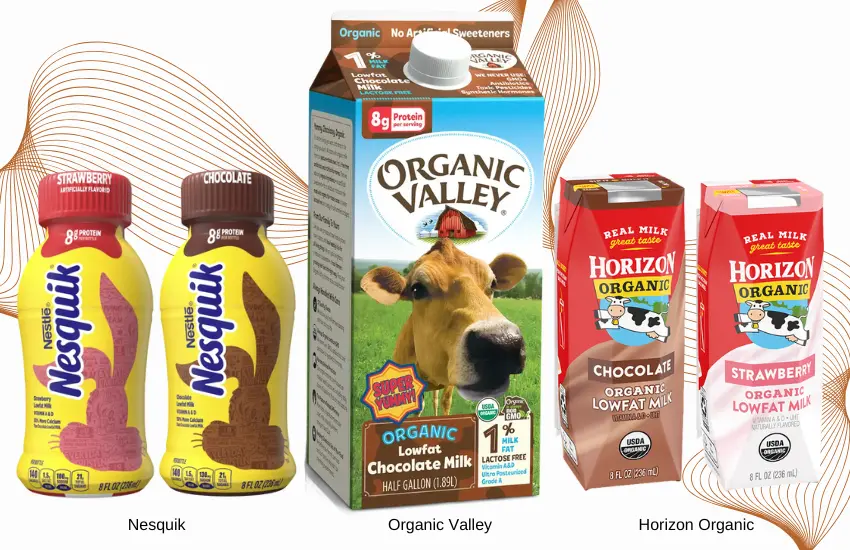
Millions of kids and adults across the nation enjoy flavored milk every day. Studies show that more than 10% of Americans drink chocolate milk regularly and nearly three quarters of students choose flavored milk at school.
Have you ever stopped to consider the nutritional value and whether there are any differences between strawberry milk vs chocolate milk? Moreover, how do the flavored varieties stack up against regular milk?
This guide provides the complete, in-depth overview you need to compare the options and determine which type of milk is best for you and your family.
As an information company, we provide 100% unbiased food reviews and nutrition reports. If you make a purchase using links on this page, we may earn a small commission (at no additional cost to you).
Overview of Report
There are many controversies, research studies, and opinions surrounding the topic of whether humans should drink cow’s milk.
The potential health benefits, issues of lactose intolerance, and pros and cons of a dairy-free diet are individual preferences and dependent on an individual’s dietary needs.
This report doesn’t delve into those issues. Instead, we aim to provide a comprehensive yet easy-to-follow comparison guide of the nutritional information and ingredients related to strawberry milk and chocolate milk.
The information in this report should help you make informed decisions about which drink is better for you.
Dairy Milk
Let’s start with the base, which is plain dairy milk. It’s packed with nutrients, vitamins, and minerals and available in many varieties, from nonfat and 2% to whole fat milk.
One cup of whole milk contains 156 calories, nearly twice the total calories in nonfat milk.
The following chart summarizes the nutritional content of regular unflavored milk, by fat content.
Cow Milk Nutritional Information
|
Per 1 Cup |
Nonfat |
2% |
Whole |
|---|---|---|---|
|
Serving Weight |
246g |
245g |
249g |
|
Calories |
84 |
122 |
156 |
|
Total Fat |
<1g |
5g |
8g |
|
— Saturated Fat |
<1g |
3g |
5g |
|
Cholesterol |
7mg |
20mg |
30mg |
|
Sodium |
101mg |
96mg |
95mg |
|
Carbohydrates |
12g |
12g |
12g |
|
— Total Sugars |
12g |
12g |
12g |
|
Protein |
8g |
8g |
8g |
Source: USDA FoodData Central
Lactose
According to Dairy Farmers of America, lactose-free milk contains the same vitamins and minerals of regular milk without the lactose, which is a natural sugar found in milk.
For individuals who are lactose-intolerant, check out Organic Valley’s chocolate milk, which is made with lactose-free 1% low-fat milk.
Calcium
According to Dietary Guidelines for Americans, getting enough calcium is important for overall health and strong bones.
MedlinePlus states that milk is a nutrient-dense source of calcium with a standard 1-cup portion containing about 300 milligrams of calcium.
Studies have shown that humans may absorb calcium more easily from drinking milk than from eating other calcium-rich foods such as spinach, kale, and bock choy.
Moreover, milk is a great source of protein, iodine, vitamin D, vitamin B2, vitamin B12, and zinc.
Strawberry Milk vs Chocolate Milk
Before you purchase milk, check the expiration date. It’s typically printed on the top of the carton above the pouring spout.
Most milk should be stored in the refrigerator and will remain fresh for about 5 to 7 days after opening.
Flavored Milks
You will find a variety of options in the dairy cooler at the grocery store. In addition to local farmers and generic store brands, leading national milk distributors offer a variety of flavored milk options.
Store milk in the fridge for no more than 7 days after opening.

Nutrition Summary: Strawberry and Chocolate Milk
The following table provides a comparison of the nutritional value of strawberry milk vs chocolate milk.
For illustration purposes, we compare products from the same brand, Nesquik.
Nutritional Summary of Nesquik Milk*
The following nutrition facts are the same for Strawberry Milk and Chocolate Milk, based on a serving size of 8 fl. oz. (236mL).
Strawberry Milk and Chocolate Milk
|
Calories |
140 |
Protein |
8g |
|
Total Fat |
2.5g |
Calcium |
420mg |
|
— Saturated Fat |
1.5g |
Vitamin A |
420mg |
|
Cholesterol |
10mg |
Vitamin D |
2.5mcg |
|
Carbohydrates |
23g |
Potassium |
310mg |
|
— Total Sugars |
21g | ||
|
— Added Sugars |
11g |
Check prices for Nesquik milk products.
The amount per serving of a few nutrients differ between the two flavors. See below for the sodium, potassium, and iron content in Nesquik Strawberry Milk and Chocolate Milk.
|
Strawberry Milk |
Chocolate Milk | |
|---|---|---|
|
Sodium |
100mg |
130mg |
|
Potassium |
310mg |
360mg |
|
Iron |
0mg |
0.7mg |
*Nutritional information based on ready-to-drink beverages.
An important factor to consider when reviewing beverage options, especially when it comes to children’s diets, is the amount of sugar per serving.
To that end, know that there is a difference between natural sugars, which occur organically in milk, and added sugars, which are added to foods during the manufacturing process.
Added Sugars
General recommendations by the U.S. FDA state that adult Americans should limit calories from added sugars to 10% or less of total calories.
A primary reason for this guidance is because foods with high added sugars deliver calories without essential nutrients, fiber, or vitamins.
Nesquik strawberry milk and chocolate milk contain 11 grams of added sugar per 8-ounce serving. With a 22% daily value, that is considered high.
Sugar is listed as the second ingredient (see below), which indicates a significant dominance in the formulation of the drink.
Note: Added Sugars used during the production of commercially processed foods may include fructose, maple syrup, cane juice, corn syrup, dextrose, and other sweeteners such as table sugar.
General nutrition guidance recommends limiting added sugars to less than 10% of total calories.
Ingredients
Various brands make flavored milks with the same ingredients, including milk, sugar, natural flavor, salt, gellan gum, vitamin A, and vitamin D.
All three brands of chocolate milk listed below use cocoa processed with alkali. Alkali is a chemical compound (a basic ionic salt of alkali metal) used to reduce the natural acidity and bitterness of cocoa and to enhance the flavor and color.
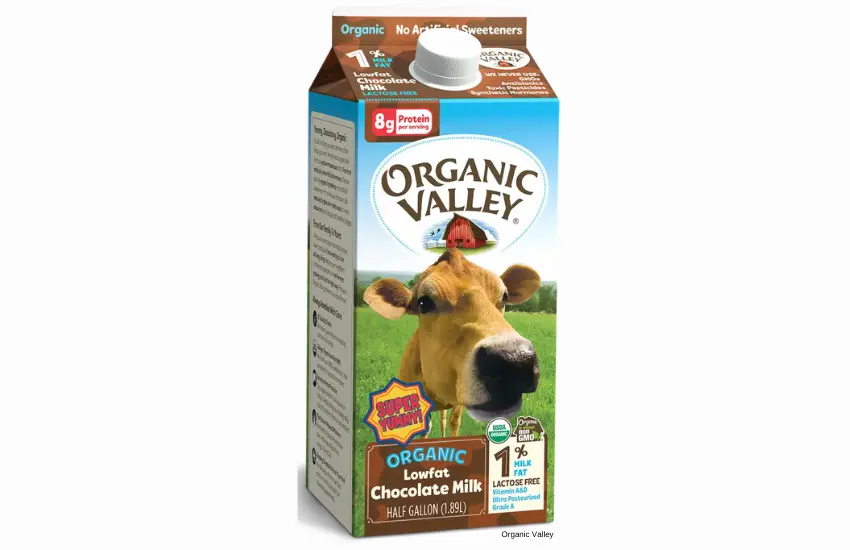
Ingredients in Organic Valley Chocolate Milk:Organic Grade A Low Fat Milk, Organic Unrefined Cane Sugar, Organic Cocoa (processed with alkali), Organic Natural Flavor, Salt, Lactase Enzyme, Gellan Gum, Vitamin A Palmitate, Vitamin D3.
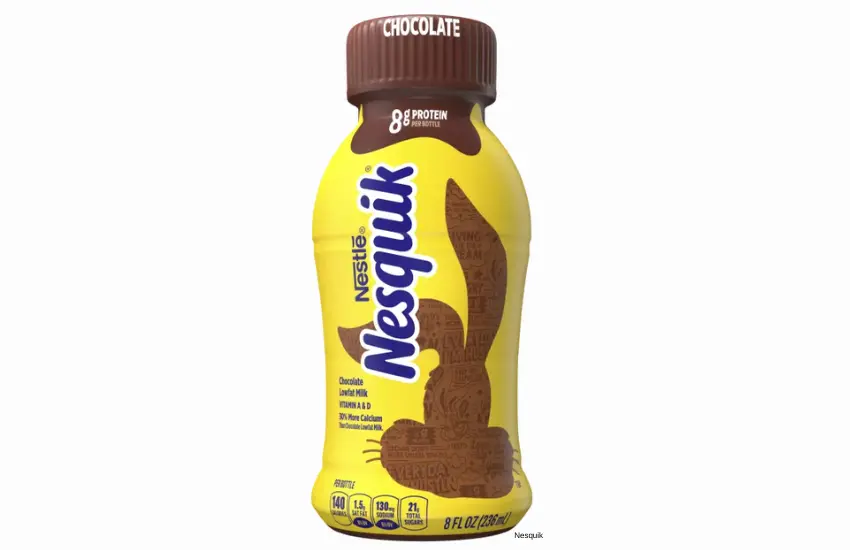
Ingredients in Nesquik Chocolate Milk:Lowfat Milk, Sugar, Cocoa (processed with alkali), Calcium Carbonate, Cellulose Gel, Natural and Artificial Flavor, Carrageenan, Salt, Gellan Gum, Cellulose Gum, Vitamin A Palmitate, Vitamin D3.
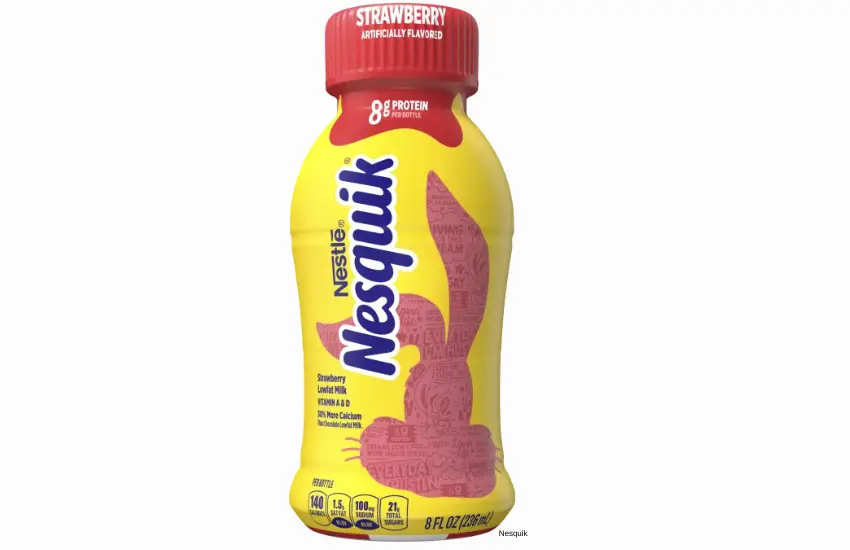
Ingredients in Nesquik Strawberry Milk:Lowfat Milk, Sugar, Calcium Carbonate, Cellulose Gel, Natural and Artificial Flavor, Carrageenan, Gellan Gum, Cellulose Gum, Citric Acid, Salt, Red 3, Vitamin A Palmitate, Vitamin D3.

Ingredients in Horizon Organic Chocolate Milk: Grade A Lowfat Organic Milk, Organic Cane Sugar, Organic Cocoa (processed with alkali), Organic Cocoa, Gellan Gum, Organic Natural Flavor, Salt, Vitamin A Palmitate, Vitamin D3.
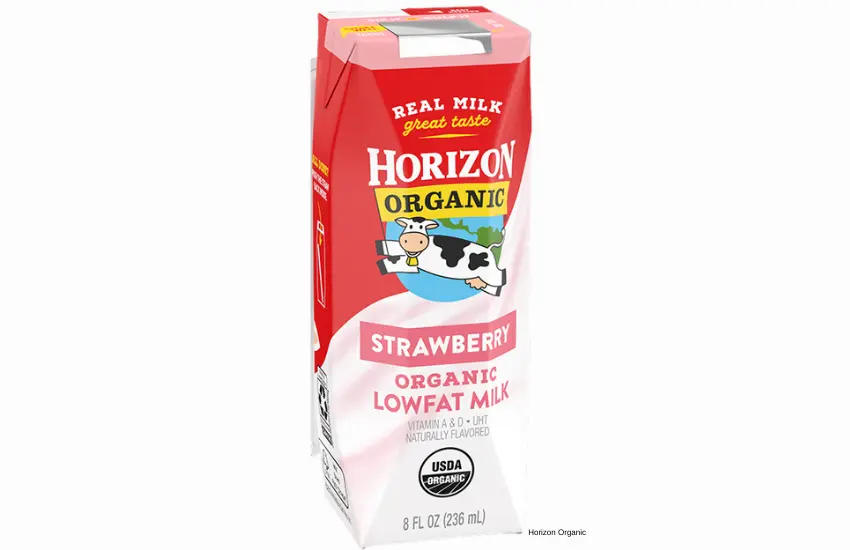
Ingredients in Horizon Organic Strawberry Milk: Grade A Lowfat Organic Milk, Organic Cane Sugar, Natural Strawberry Flavor, Gellan Gum, Vitamin A Palmitate, Vitamin D3.
As you can see from the lists above, there are a few ingredients that are unique to Nesquik’s brand of flavored milks, including Calcium Carbonate, Red 3, and Carrageenan.
To help you compare the options, here are brief definitions of these additives.
Health Benefits of Milk
As mentioned above, we specialize in providing data, information, charts, and reports on commercially processed and fast food. We do not provide dietary advice.
However, our staff spends the day researching, aggregating, and analyzing reports. Our efforts uncover a lot of amazing and helpful resources that we would like to share with our audience.
If you want to learn more about the potential benefits (as well as concerns) of drinking milk, review the following list of articles and resources.
Recommended Resources
We publish 100% unbiased nutrition reports based on analysis of nutrition and ingredients data conducted by our staff. We do not use AI. We do not accept incentives in exchange for special consideration when preparing food reviews. Direct links to online retailers such as Amazon are provided on this page for your convenience. If you are interested in the product and use a link to make a qualifying purchase, we may (but not always) receive a small referral fee (at no additional cost to you). Commissions help cover the cost of publishing free nutrition reports. Please read our disclosure for more information.
Nutrition facts, prices, and ingredients are based on available information as of the date of publication. Restaurants and food manufacturers may change recipes or formulations without notice. Check package labels and ask the product manufacturer or restaurant for the most up-to-date information. Unless otherwise stated, %DV is based on a 2,000 calorie diet. All reports and reviews published on this site are for informational purposes only. NutritionandIngredients.com does not provide healthcare advice or dietary recommendations. Always consult your licensed physician for any healthcare or dietary advice.
